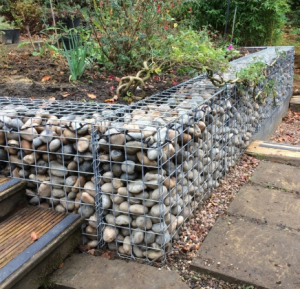Tips to handle retaining Wall Repairing Needs in Sydney
January 18, 2021 / 0 Comments / by admin
A well-developed retaining wall allows adjacent properties to be kept secure and usable despite wide differences in elevation. Retaining walls can convert a sloping site that is unsuitable for construction, and convert it into one or more level lots that can sustain homes, parking areas, walkways or recreation areas. This type of wall may be used on a smaller scale to build a level parking or pivotal area for a house or “carve out—” a level area appropriate for a patio or walkway.

Issues with your retaining walls require immediate attention
Doesn’t matter how big or small it is, until something goes wrong, a retaining wall usually does not draw attention. Most wall issues are more than aesthetic; they demonstrate structural problems that may ultimately lead to the collapse of all or part of the wall. That’s why, as soon as they are noticeable, it should be repaired immediately. Regardless of how minor the problem might seem.
When soil pressure on the elevated side of the wall becomes greater to withstand, the smaller walls seems to tilt or bow down. Cracks are likely to follow, particularly in a masonry wall. If the wall is made from blocks or CMUs (concrete masonry units), cracking “stair-step” alongside mortar or joint lines is prevalent. In more extreme cases, a poured-concrete wall will crack open and bow down; it can also start tilting downward.
How to handle damaged wooden retaining walls
Damaged retentive walls require repairing and replacement at times. A prime example for this is damaged wood walls from rotting railroad ties. However, most of the masonry-based walls can be saved from demolition.
Damage to a retaining wall can be similar in type and condition to the damage to foundation walls. The right foundation repairing contractors have the training and supplies required to restore and improve smaller walls for this purpose. For small retaining wall repairs, this type of specialty contractor is typically the best option.
When you need helical repairs
Helical anchors, also known as’ tiebacks,’ are sometimes used by base retaining wall repair contractors in Sydney to stabilise a retentive wall that has started showing signs of cracks or tilts. These steel anchors are designed to act like giant screws.
To provide access to the anchor, the technicians will create a hole in the wall. Then, as the anchor is rotated, helical-shaped plates on the anchor shaft is prompted to pull it into the soil behind the walls. Technicians can assess whether an anchor is deep enough to exert enough girding force on these walls by calculating the hydraulic pressure needed to turn the anchor. A big-diameter nut can be tightened on the anchor shaft to exert clamming pressure on the wall after a steel plate is mounted over the end of the anchor that protrudes through the wall.



